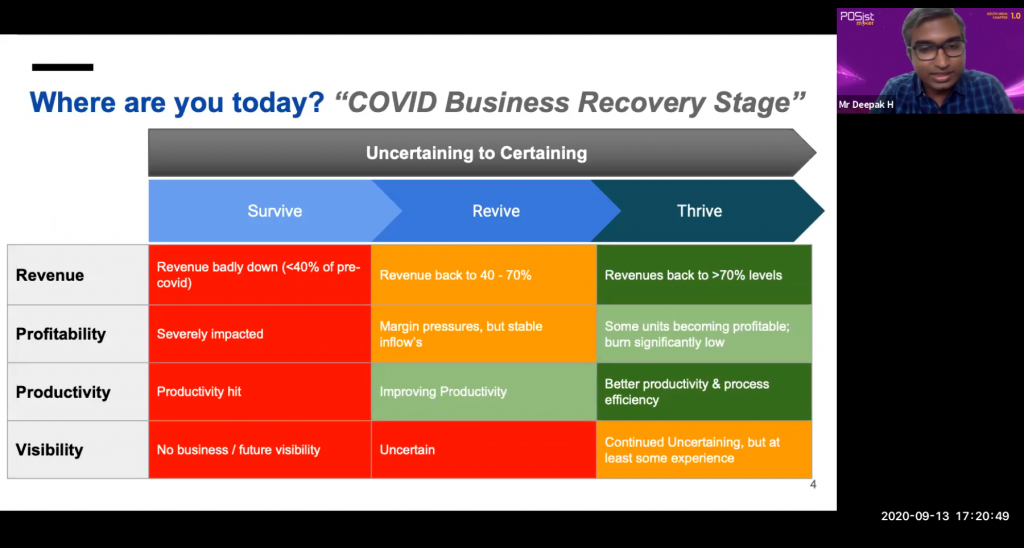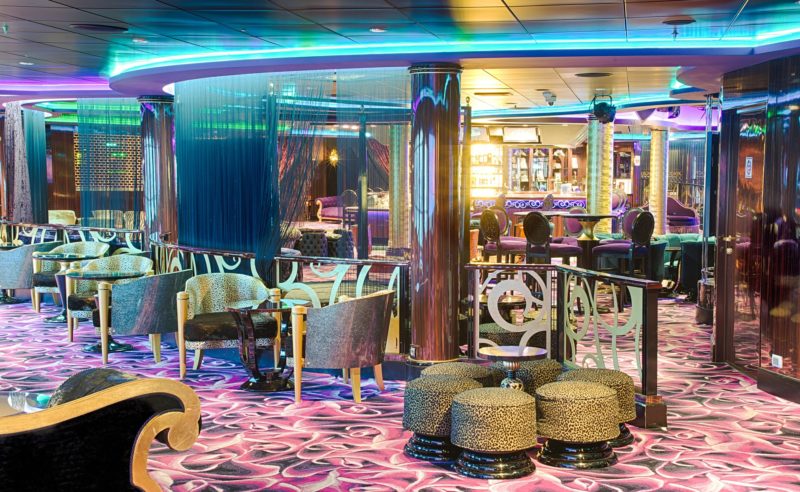Mr. Deepak H., Founder & CEO of i2iResearch LLP, started the power talk session with a presentation on “Financial Planning For Restaurants,” where he discussed effective measures restaurants can take to minimize revenue loss and provided tips on proactive initiatives to drive incremental revenue.
Deepak has been a business advisor and brand consultant for the past 16 years. He has worked very closely with F&B brands in his earlier roles. In his role as CFO at Smoor Chocolates, the brand grew 6x since the day he started. He has been closely consulting pubs, dessert brands in the milkshake space as well as fine dining restaurants.
Addressing a question on how restaurants should go ahead with planning their finances in the post-COVID era, Deepak highlighted that financial recovery would be different for each format and vary according to the framework of each restaurant. To make it relevant and easier for the audience to understand, Deepak outlined a framework concept categorizing restaurants into 3 recovery stages and simultaneously suggested effective measures to improve cash flow for each phase.
- The survival phase: In this scenario, restaurant revenues have been hit badly, profitability is abysmally low, and operators have no clear visibility on where to take the business.
Pro Tip: Address immediate challenges to the workforce, customers, and partners.
- The revival phase: This scenario is where restaurants are likely to observe margin pressures, but they will also be witnessing stable inflows, and cash management will become relatively better than the initial survival phase.
Pro Tip: As cash management will be at its peak, address near-term cash management challenges and resilience issues.
- The thriving phase: An ideal phase that restaurants would love to be in. This is a phase where revenues will start hitting about 70%+ of pre-COVID levels.
Pro Tip: Plan to return the business to scale quickly. Come up with the next norm relevant business model and plan cash requirements well.
How To Improve The Cash Situation At The Survival Stage
For the restaurant businesses in the survival stage that are struggling with their revenues, Deepak advised effective ways to improve the cash situation.
From the revenue stabilization point of view, restaurants can adopt measures such as having a diversified business model, growing online delivery & takeaway revenue streams, implementing contactless payment options, improving communication across different target groups, and rationalizing menus.
Deepak added that it is essential to make decisions based on future cash requirements, ensuring a minimum of 6 months of liquidity. Anything below this standard would be challenging. He also emphasized that there must be a reduction in rental costs and discretionary spends such as brand agencies, downsizing teams, etc.
Measures To Improve Cash Flow By Business Recovery Phase
Depending on the recovery phase of each restaurant, Deepak outlined some specific strategies that he grouped into different categories. These are some of his key takeaways:
- Wages & Staff Reduction: During the first phase of survival, many restaurateurs held back staff wages. If your restaurant is still in the survival stage, try to see if you can work on an arrangement where 30% of staff is paid 50% of their wages and then the arrears are paid later. During the revival stage, it is recommended to operate with 30-60% staff owing to the current social distancing guidelines and see if you can manage operations with 50-70% wages. Thrive is a phase when one can go back to the earlier model of operations and utilize the entire staff; hence salaries can be paid out to the extent of 80-100%.
- Vendor Management: Restaurants might have been carrying a lot of unused stock that may have piled up in the past; if there is a possibility to return it and ask for a credit, one should certainly go for it. Secondly, see if you can renegotiate payment terms with vendors and leverage old business relationships to navigate through these tough times. Thirdly, you must have a payout plan and communication. No matter what you do on the overhead/payroll reduction or tactical point of view, communicating the same to your staff, partners, etc., is critical.
- Purchases and inventory management: This area has seen many lapses, but there are times when things tend to be missed out. So, it is recommended to analyze the low-cost products with better margins. Look back at menu items that are doing good. Track them consistently.
Do not hold more than 3/4th days of inventory at any given time. If you can do it at a level that is lower than this, it would be the best-case scenario. It is vital to keep an eye on inventory on a weekly basis because the value will keep changing, so it is important to anticipate and play around with the total value of the stock.Many times, it might be a packaging material or a critical ingredient on which you get a better discount with a Minimum Order Quantity (MOQ) product or on a higher volume of orders. However, if you fall into the revive or survive phase, it is still okay to lose that extra buck and go with low volumes even though your unit cost of buying it is on a higher side as it will allow you to conserve cash better and build liquidity. - Rental negotiations: One of the methods that one can adopt in the survival stage is to ask for a rental waiver or adjust it against a deposit that has already been made. You could even request for payments to be deferred to the next financial year. However, if you are in the revival phase, the landlord may expect you to pay in full. From a financial standpoint, even if you save 20% on rent and push it to the subsequent year, it gives you leverage on the liquidity.
- Keep discretionary expenses low. If you can slash it by 50% in the revival phase, it will be ideal.
On a closing note, Deepak added 3 critical points that are important for one to consider while moving from the revive to thrive stage ;
- How swiftly can you have a new business model that’ll help you move from where you are today and move to a new level of performance?
- How can technology leverage what you’re doing today and minimize your costs when you move to the thrive phase?
- and, Where can automation play a role when you move to the thrive phase?
“As a restauranteur, you must keep in mind these three points and work upon them in the post COVID era,” he added.
Keep watching this space for detailed coverage of the Posist Mixer, South India Chapter 1.0 event.



















